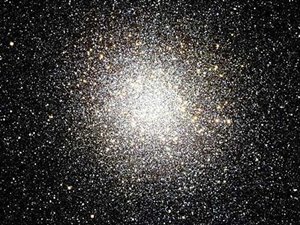 Globular clusters are vast swarms of stars, up to a hundred thousand or more, which were formed through time. Tightly bound up by gravity, globular clusters are spherical in size. The stars in a globular cluster are red giants, much older than our Sun or our Solar System. Each globular cluster can contain hundreds of thousands of stars.
Globular clusters are vast swarms of stars, up to a hundred thousand or more, which were formed through time. Tightly bound up by gravity, globular clusters are spherical in size. The stars in a globular cluster are red giants, much older than our Sun or our Solar System. Each globular cluster can contain hundreds of thousands of stars.
All stars are formed in clusters when a nebula starts to break up into separate clouds of material. But globular clusters are special, partly because they are so large, and also because the stars have not drifted apart. For example, there is now no trace of the cluster in which our Sun was born. About 100 globular clusters have observed in our Milky Way galaxy. They are all very far away from us, grouped around the nucleus of the galaxy. There were probably formed soon after the galaxy, at least 10,000 million years ago, so they are among the oldest objects in the Universe.
The Hercules star cluster is one example of a globular star cluster. Messier 80 is also another globular cluster located in the constellation Scorpius, and is about 28,000 light years away from us. M75 and M15 are also examples of globular clusters.
